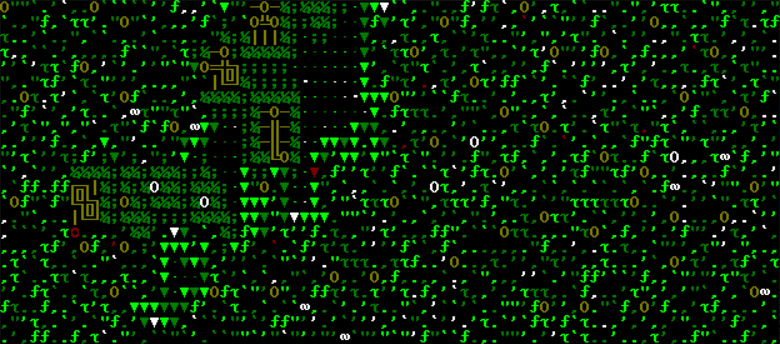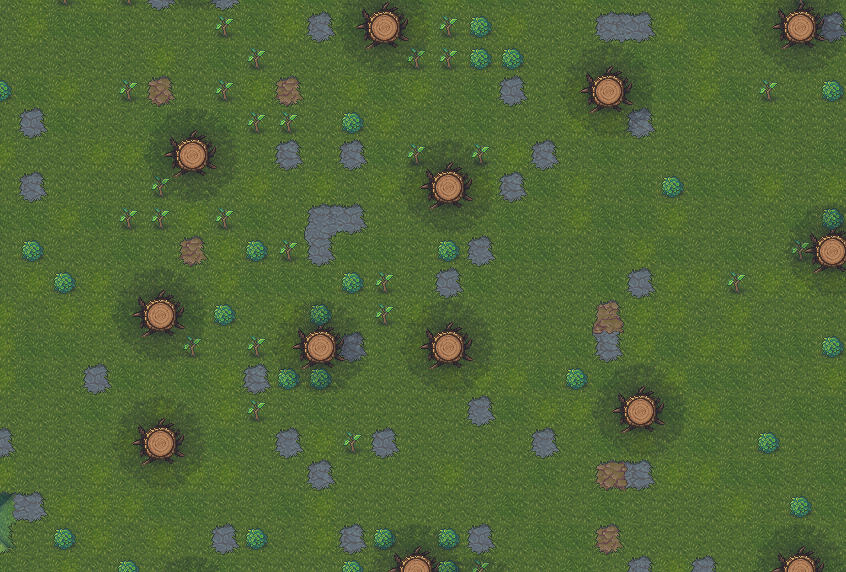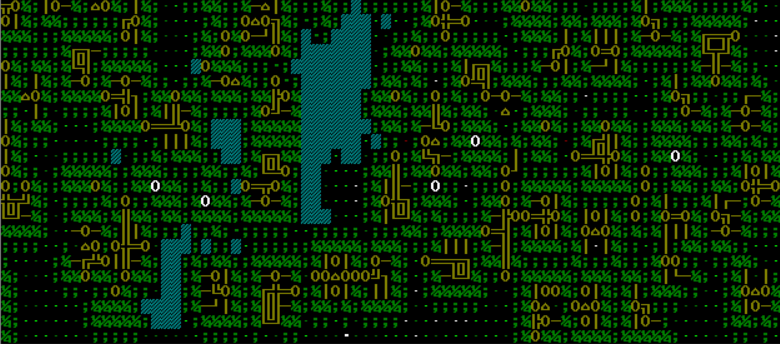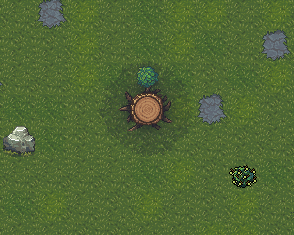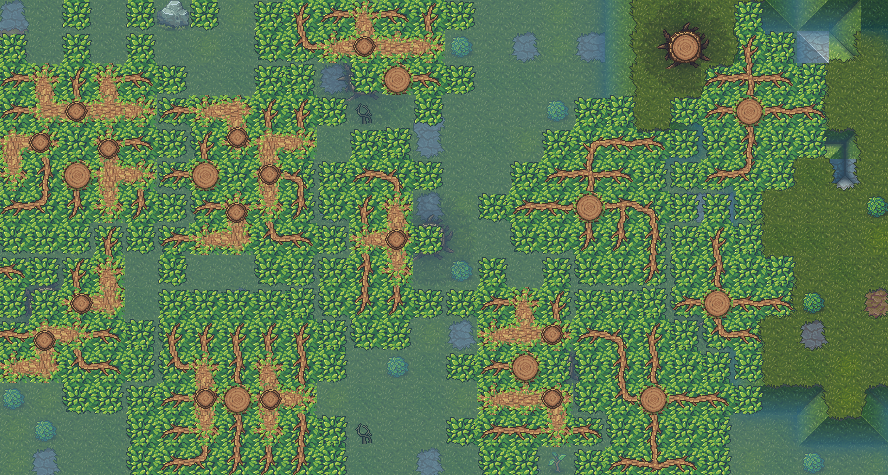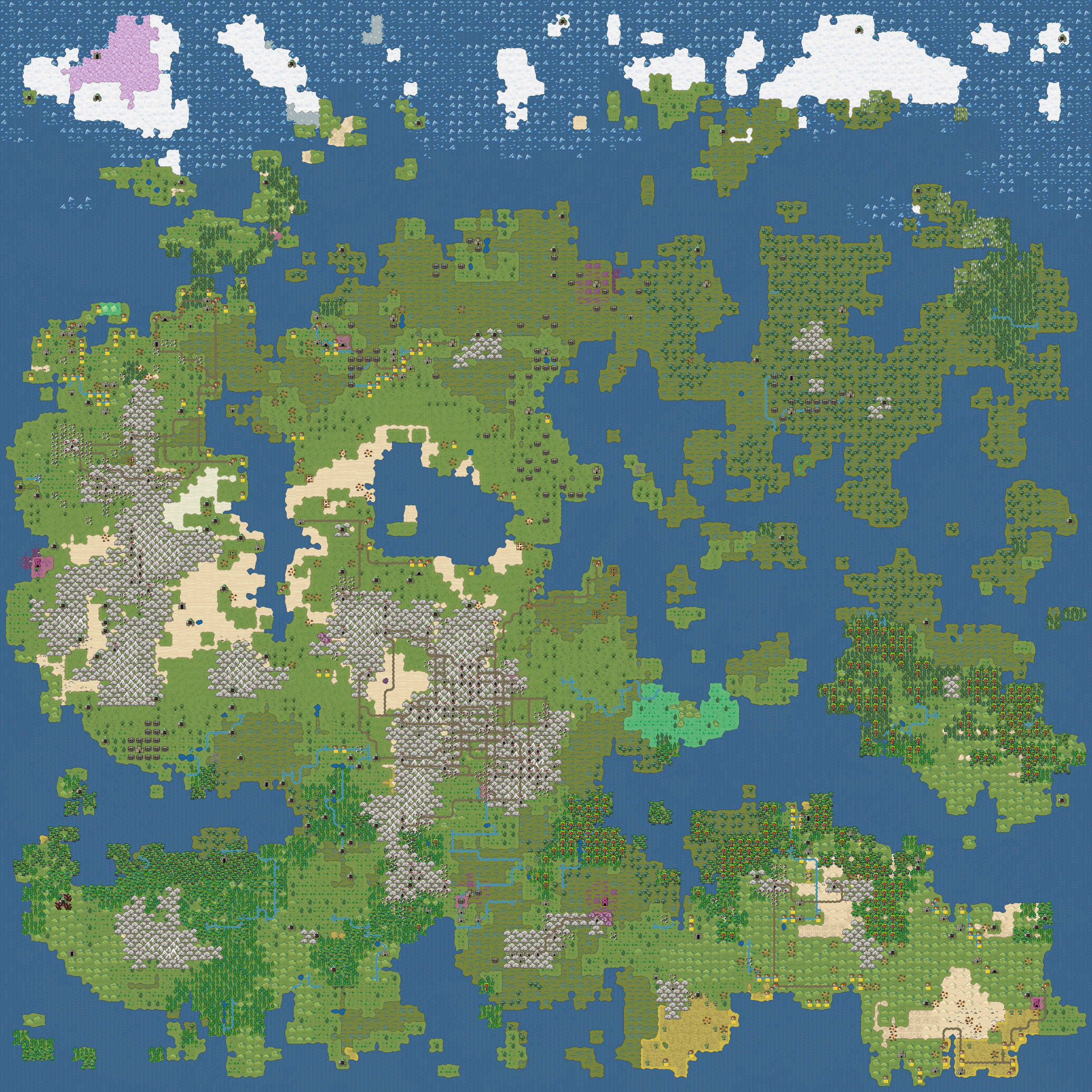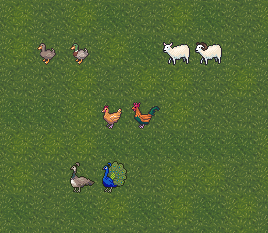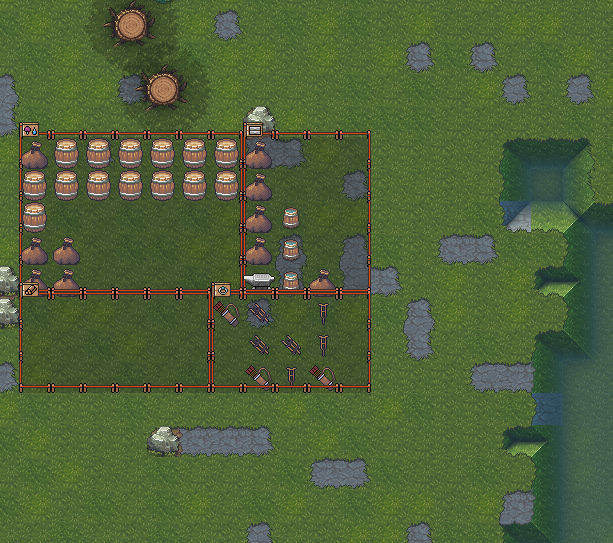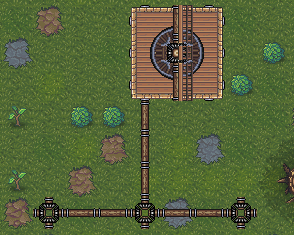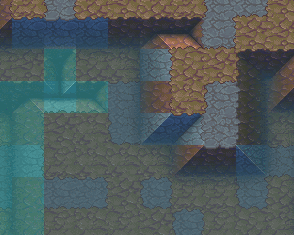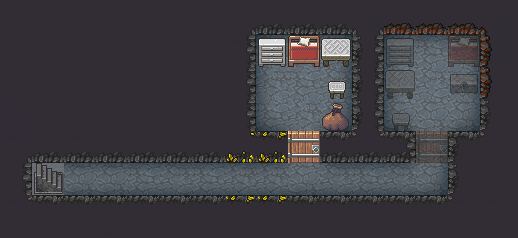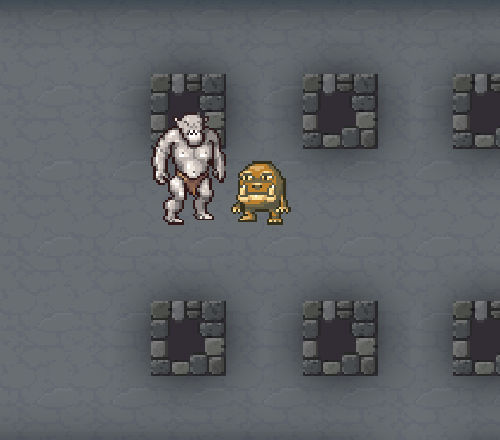Noble-drowning facilities (AKA water)
Hey.
The main project we've been focusing on recently is the depiction of bodies of water. In Dwarf Fortress, that can mean a lot of things: still pools, rocky brooks, wide rivers, oceans, lakes, underground lakes, city sewers, and channel and cistern and noble-drowning facilities you produce in your own fortresses.
This is the current status of the rocky brooks.
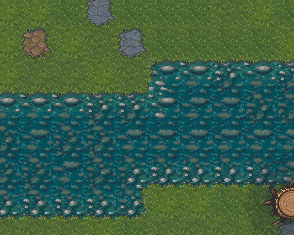
We're using sixteen frames of animation, which is a first for DF, ha ha, and we might touch this up with some flow direction indications and variants. Dwarves can walk across these, so it's important that they don't look very deep.
This is a deeper, more opaque pool of water that the dwarves prefer not to drink from, but which can have turtles and moghoppers for the dwarves to catch, to add to their food variety and allow for shell crafts. Or to keep as pets. Or for your zoo terrariums and aquariums.
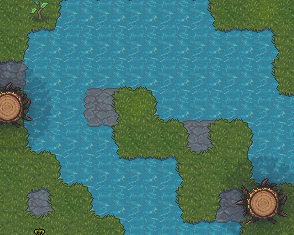
Here are the larger workshops - the kennels and the siege workshop. Many animals can be brought from a wild to a semi-domesticated to a tame state.
This is not entirely safe! But it is good to have mostly friendly critters running about the fortress.
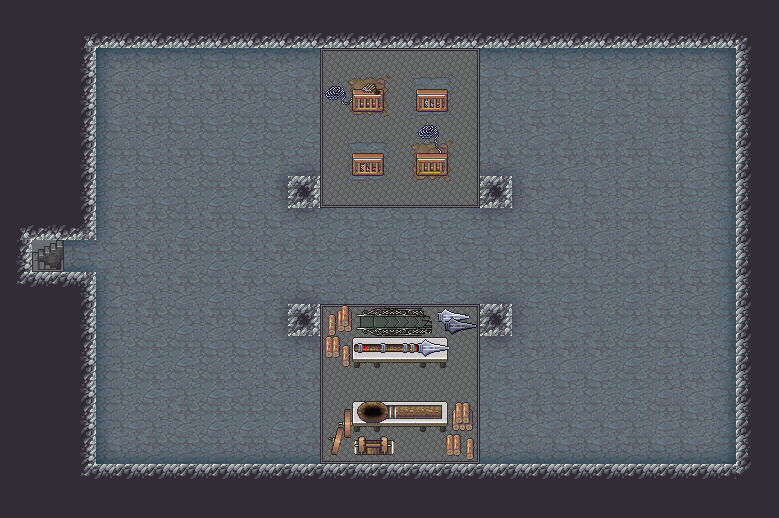
Here are some minecart tracks! Build them with wood, stone or metal, or carve grooves into cavern floors or glaciers.

With the availability of wheelbarrows, it's not always practical to produce a lot of infrastructure just to cart off stone, but you can always use them to do routine hauls of finished goods, or let your dwarves take a fun ride. Take a ride yourself in adventure mode. Or fill a cart with rocks and crash it against an obstacle as an improvised boulder shotgun. Or use serrated discs. People always find a way to turn DF features into weapons!
- Tarn
The main project we've been focusing on recently is the depiction of bodies of water. In Dwarf Fortress, that can mean a lot of things: still pools, rocky brooks, wide rivers, oceans, lakes, underground lakes, city sewers, and channel and cistern and noble-drowning facilities you produce in your own fortresses.
This is the current status of the rocky brooks.

We're using sixteen frames of animation, which is a first for DF, ha ha, and we might touch this up with some flow direction indications and variants. Dwarves can walk across these, so it's important that they don't look very deep.
This is a deeper, more opaque pool of water that the dwarves prefer not to drink from, but which can have turtles and moghoppers for the dwarves to catch, to add to their food variety and allow for shell crafts. Or to keep as pets. Or for your zoo terrariums and aquariums.

Here are the larger workshops - the kennels and the siege workshop. Many animals can be brought from a wild to a semi-domesticated to a tame state.
This is not entirely safe! But it is good to have mostly friendly critters running about the fortress.

Here are some minecart tracks! Build them with wood, stone or metal, or carve grooves into cavern floors or glaciers.

With the availability of wheelbarrows, it's not always practical to produce a lot of infrastructure just to cart off stone, but you can always use them to do routine hauls of finished goods, or let your dwarves take a fun ride. Take a ride yourself in adventure mode. Or fill a cart with rocks and crash it against an obstacle as an improvised boulder shotgun. Or use serrated discs. People always find a way to turn DF features into weapons!
- Tarn
